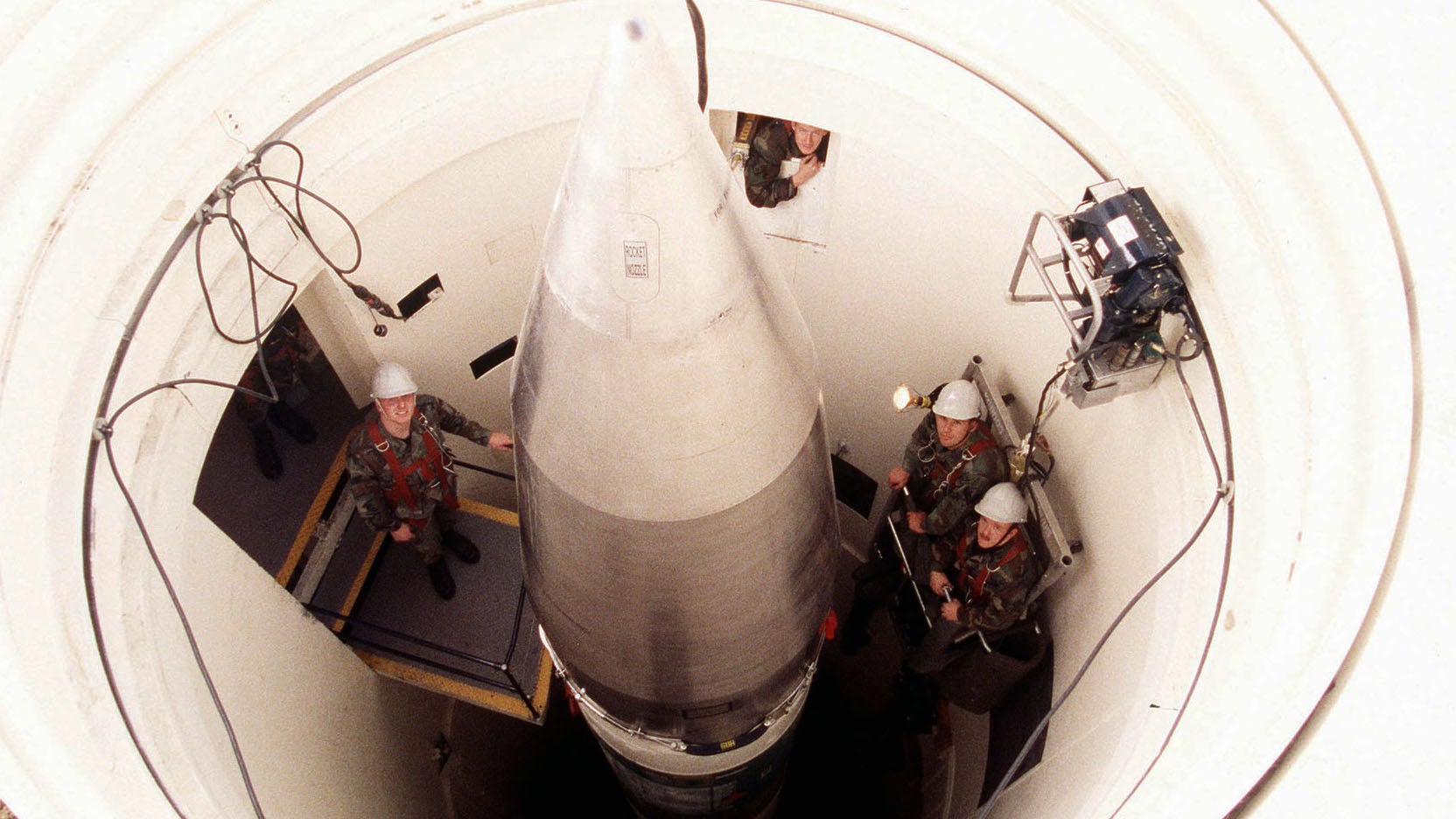The U.S. Air Force’s latest Minuteman III intercontinental ballistic missile test ended in failure after a “ground abort” prior to launch. While the cause is under investigation, the news comes at a time when a debate is raging in Congress and elsewhere about whether to proceed with developing a replacement for the missile, which has been in use since the early 1970s.
The unarmed LGM-30G Minuteman III intercontinental ballistic missile (ICBM) was due to be test-launched from Vandenberg Air Force Base, California, on May 5, between 12:15 AM and 6:15 AM Pacific Time. Air Force Global Strike Command (AFGSC) has confirmed that it’s “assessing the potential to reschedule the launch.” No comment has yet been made about the nature of the “ground abort,” and we can’t really even say it was a malfunction at this time. It could have been a technical failure of the missile or its launch system, or it could have involved a tracking system loss, a broken communications link, or even a range “fouler,” when an unauthorized asset strays into the missile’s planned path, for all we know.

Test launches of the Minuteman III are a fundamental part of evaluating the ICBM and gathering data to keep the system effective, including validating its readiness and accuracy. Furthermore, aborted tests and outright failures are also not unheard of, with the last mishap coming in 2018, again out of Vandenburg, when an unarmed Minuteman III suffered a failure over the Pacific. In that instance, Air Force personnel utilized the weapon’s self-destruct feature to safely destroy it in flight.
“The Air Force adheres to strict protocols while performing operational test launches, only launching when all safety parameters with the test range and missile are met,” AFGSC said in the release about the latest incident.
While it’s too early to say how critical the latest failed test launch was, it does come at a time in which the future of the land-based arm of the U.S. nuclear triad is under considerable scrutiny.
The Air Force and Pentagon have long called for a replacement for the Minuteman III under the Ground Based Strategic Deterrent program, or GBSD, planned for initial operational capability by 2029.
However, the Biden administration is likely to review the status of GBSD, based on the costs involved, and the possibility of modernizing the Minuteman III for further years of service. The total cost of GBSD could reach $264 billion, excluding warhead development, which might add around $15 billion more.

Last September, the Air Force awarded Northrop Grumman a $13.3 billion engineering and manufacturing development (EMD) contract to develop the GBSD and the service approved the company’s missile design, under the EMD baseline review, two months later.
Northrop Grumman recently announced the completion of the integrated baseline review for GBSD, which provides the Air Force with details on expected costs and schedules, and any potential risk.
In the meantime, Northrop Grumman continues work to sustain the current Minuteman III fleet. In April the company received a $2.3-billion contract to maintain the propulsion system through 2040.

If the Air Force and Pentagon get their wish, Northrop Grumman will complete around 660 of the new GBSD missiles, also known as the LGM-182A, to replace the Minuteman IIIs in silos across Colorado, Montana, Nebraska, North Dakota, and Wyoming, and to provide spares and test missiles.
It’s currently unclear exactly how the GBSD will improve on the Minuteman III, but we do know that it will accommodate the Mk 21A reentry vehicle, carrying a W87-1 nuclear warhead, which The War Zone has examined in detail here.

There is also the potential for the GBSD to become a more versatile weapon than the current ICBM fleet. For example, various new kinds of capabilities could be integrated, including a nuclear-armed hypersonic boost-glide vehicle that the Air Force has studied in the past.
However, recent polls suggest the majority of U.S. voters oppose GBSD and instead believe that alternative options — including a service-life extension effort for the Minuteman III — should at least be addressed.
At the same time, lawmakers have made efforts to challenge GBSD, including an unsuccessful proposal last summer to redirect $1 billion from the program to a pandemic preparedness fund. Others are demanding a study on the future of the land-based leg of the triad.
But while scrapping the ICBM force altogether has found traction among some lawmakers, at least, the reality of relying on ballistic missile submarines and strategic bombers for nuclear deterrence brings its own problems, as we have looked at in the past in regard to putting manned bombers back on nuclear alert.

The question of whether the land-based portion of the nuclear triad even makes sense is something The War Zone
has tackled before. This is based on the fact that America’s ICBMs today serve as a “nuclear sponge,” designed to absorb enemy warheads and thereby “save” other potential targets. They also offer a static nuclear strike option that can be activated and deployed against targets around the globe quickly.
At the same time, the ICBM force is currently targeted, by default, out to sea, as a failsafe against accidental launches that could trigger a nuclear war.

Again, it should be stressed that until we know more about the reasons for today’s “ground abort,” it’s not possible to say whether it will provide ammunition to those seeking to replace the Minuteman III with GBSD.
Regardless, the Pentagon has already argued that the Minuteman III is now too old to be realistically upgraded in a cost-effective way, while the Biden administration has, so far, indicated it is committed to retaining the nuclear triad. That said, it is still possible that a modernized ICBM may feature a reduced number of new missiles.
While an aborted test launch might not have an immediate impact on the future of the GBSD program, the Minuteman III replacement certainly seems to be at a critical crossroads.
Contact the author: thomas@thedrive.com
